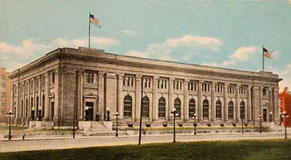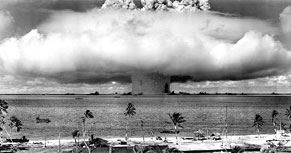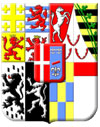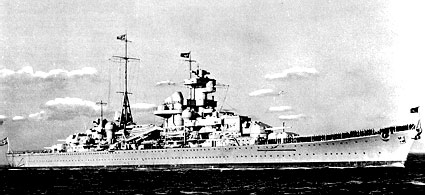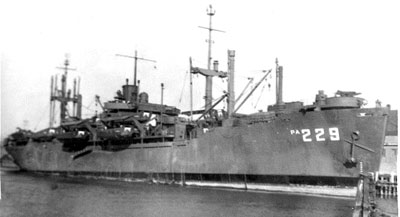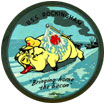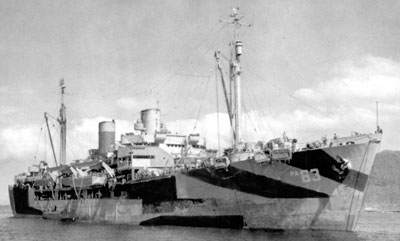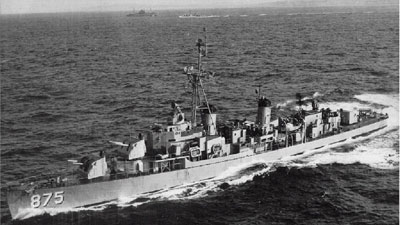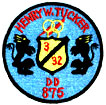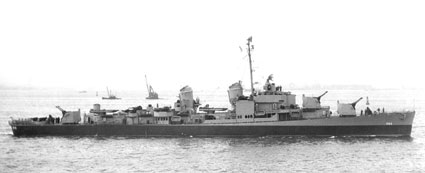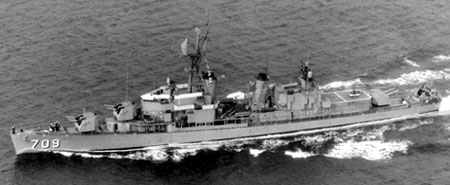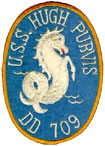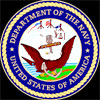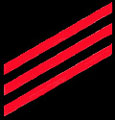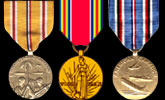| North
High School Wall of Honor Phillip Sterling Dutcher Graduated January, 1946 |
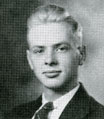 |
||||||||||||||||||||||||||||||||||||||||||||||||||||||||||||||||||||||||||||||||||||||||||||||||||||||||||||||||||||||||||||||||||||||||||||||||||||||||||||||||||||||||||||||||
| Research done by Claradell Shedd, class of 1953. | |||||||||||||||||||||||||||||||||||||||||||||||||||||||||||||||||||||||||||||||||||||||||||||||||||||||||||||||||||||||||||||||||||||||||||||||||||||||||||||||||||||||||||||||||
|
|||||||||||||||||||||||||||||||||||||||||||||||||||||||||||||||||||||||||||||||||||||||||||||||||||||||||||||||||||||||||||||||||||||||||||||||||||||||||||||||||||||||||||||||||
|
|||||||||||||||||||||||||||||||||||||||||||||||||||||||||||||||||||||||||||||||||||||||||||||||||||||||||||||||||||||||||||||||||||||||||||||||||||||||||||||||||||||||||||||||||
|
|||||||||||||||||||||||||||||||||||||||||||||||||||||||||||||||||||||||||||||||||||||||||||||||||||||||||||||||||||||||||||||||||||||||||||||||||||||||||||||||||||||||||||||||||
| Operations Crossroads Operation Crossroads was a series of nuclear weapon tests conducted by the United States at Bikini Atoll in mid-1946. It was the first test of a nuclear weapon after the Trinity nuclear test in July 1945. Its purpose was to investigate the effect of nuclear weapons on naval ships. Crossroads consisted of two detonations, each with a yield of 23 kilotons: Able was detonated at an altitude of 520 feet (158 m) on July 1, 1946; Baker was detonated 90 feet (27 m) underwater on July 25, 1946. A third burst, Charlie, planned for 1947, was canceled primarily because of the Navy's inability to decontaminate the target ships after the Baker test. Crossroads Charlie was rescheduled as Operation Wigwam, a deep water shot conducted in 1955 off the California coast. The Crossroads tests were the fourth and fifth nuclear explosions conducted by the United States (following the Trinity test and the bombings of Hiroshima and Nagasaki). They were the first of many nuclear tests held in the Marshall Islands and the first to be publicly announced beforehand and observed by an invited audience, including a large press corps. |
|||||||||||||||||||||||||||||||||||||||||||||||||||||||||||||||||||||||||||||||||||||||||||||||||||||||||||||||||||||||||||||||||||||||||||||||||||||||||||||||||||||||||||||||||
|
|||||||||||||||||||||||||||||||||||||||||||||||||||||||||||||||||||||||||||||||||||||||||||||||||||||||||||||||||||||||||||||||||||||||||||||||||||||||||||||||||||||||||||||||||
| (1) DMK Prinz
Eugen (IX-300) at Bikini Atoll; July 1, 1946: The ex-German cruiser Prinz Eugen was a unit of the 'Crossroads' target fleet. This fleet was designated Task Group 1.2 and was commanded by Rear Admiral F. G. Fahrion, flying his flag in the heavy cruiser Fall River (CA-131). Prinz Eugen belonged to Task Unit 1.2.1, which comprised five battleships and four cruisers. During June, preparations for the tests were completed, the target ships were positioned, the comprehensive instrumentation installation was completed and checked, and numerous rehearsals were held. The final rehearsal took place on 24 June, "Queen day," when a dummy bomb (a 500-pound phosphorous fragmentation bomb, not an atomic weapon) was dropped and "burst" at 0914. Prinz Eugen's bow lay 1194 yards from the explosion at a relative bearing of 343 degrees 40 seconds, and was substantially undamaged. Only the paint had been scorched and the foremast split (see photo #3, p.65,in Warship No.9; in that photograph, one can see the scorch marks on the two port rangefinder cupolas, the so-called " Wackeltopfs"). In addition, much of the ship's rigging went down and two hammocks were blown up onto the mainmast by the blast (on the port lower spar level with the radar antenna). |
|||||||||||||||||||||||||||||||||||||||||||||||||||||||||||||||||||||||||||||||||||||||||||||||||||||||||||||||||||||||||||||||||||||||||||||||||||||||||||||||||||||||||||||||||
|
|||||||||||||||||||||||||||||||||||||||||||||||||||||||||||||||||||||||||||||||||||||||||||||||||||||||||||||||||||||||||||||||||||||||||||||||||||||||||||||||||||||||||||||||||
| (2) USS Rockingham
(APA-229) Remaining on the U.S. West Coast until 11 March, she steamed for Eniwetok and Kwajalein to participate in the Joint Task Force 1 atomic bomb tests. Returning to San Francisco by way of Pearl Harbor 29 April, she was back at Pearl on 14 May. Proceeding on to Kwajalein and Bikini Atoll where she arrived 1 June, she returned to Pearl Harbor briefly 11 June, then steamed back to Bikini and Kwajalein before finally steaming for Pearl Harbor and San Francisco, where she arrived 12 September 1946. |
|||||||||||||||||||||||||||||||||||||||||||||||||||||||||||||||||||||||||||||||||||||||||||||||||||||||||||||||||||||||||||||||||||||||||||||||||||||||||||||||||||||||||||||||||
|
|||||||||||||||||||||||||||||||||||||||||||||||||||||||||||||||||||||||||||||||||||||||||||||||||||||||||||||||||||||||||||||||||||||||||||||||||||||||||||||||||||||||||||||||||
|
|||||||||||||||||||||||||||||||||||||||||||||||||||||||||||||||||||||||||||||||||||||||||||||||||||||||||||||||||||||||||||||||||||||||||||||||||||||||||||||||||||||||||||||||||
| (3) USS Bladen
(APA-63) On 22 January 1946 she proceeded to Pearl Harbor where she remained until 18 May undergoing preparations for Operation Crossroads, the atomic bomb tests at Bikini Atoll. She participated in the operation between 31 May and 30 August 1946. Bladen departed Kwajalein Atoll 30 August for San Francisco, where she arrived 13 September. Bladen departed the west coast November 1 and steamed to Norfolk, VA. Upon arrival she reported for inactivation and was decommissioned December 26, 1946. She was transferred to the Maritime Commission August 3, 1953. |
|||||||||||||||||||||||||||||||||||||||||||||||||||||||||||||||||||||||||||||||||||||||||||||||||||||||||||||||||||||||||||||||||||||||||||||||||||||||||||||||||||||||||||||||||
|
|||||||||||||||||||||||||||||||||||||||||||||||||||||||||||||||||||||||||||||||||||||||||||||||||||||||||||||||||||||||||||||||||||||||||||||||||||||||||||||||||||||||||||||||||
|
|||||||||||||||||||||||||||||||||||||||||||||||||||||||||||||||||||||||||||||||||||||||||||||||||||||||||||||||||||||||||||||||||||||||||||||||||||||||||||||||||||||||||||||||||
| (4) USS Henry
W. Tucker (DDR-875) 1945-1950 Henry W. Tucker was laid down by the Consolidated Steel Corporation at Orange, Texas on 29 May 1944, launched on 8 November 1944 by Mrs. Henry Walton Tucker, the mother of the late Pharmacist’s Mate Third Class Henry W. Tucker, and commissioned on 12 March 1945. Henry W. Tucker operated with the United States Seventh Fleet in support of United Nations Forces during the Korean War, and participated in the Blockade of Wonsan and other North Korean ports. After she alernately served on the United States West Coast and in Hawaiian waters with deployments to the Western Pacific with the Seventh Fleet. She underwent an extensive Fleet Rehabilitation and Modernization (FRAM) overhaul at the Boston Naval Shipyard in Boston, Massachusetts, between 13 December 1962 and 4 December 1963. During the Vietnam War Henry W. Tucker served as plane guard for aircraft carriers on Yankee Station in the Tonkin Gulf, participated in Operation Sea Dragon and Operation Market Time, patrolled on search and rescue duties, and carried out naval gunfire support missions. |
|||||||||||||||||||||||||||||||||||||||||||||||||||||||||||||||||||||||||||||||||||||||||||||||||||||||||||||||||||||||||||||||||||||||||||||||||||||||||||||||||||||||||||||||||
|
|||||||||||||||||||||||||||||||||||||||||||||||||||||||||||||||||||||||||||||||||||||||||||||||||||||||||||||||||||||||||||||||||||||||||||||||||||||||||||||||||||||||||||||||||
| (5) USS John
A. Bole (DD-755) Following shakedown training out of Guantanamo Bay, Cuba, John A. Bole escorted Template:USS Franklin north to New York, arriving on 24 April 1945. After moving to Boston to join Saint Paul, she sailed on 15 May for the Pacific during the final push in the war against Japan. Steaming via the Panama Canal, she arrived Pearl Harbor on 7 June 1945. The ship joined a carrier group in Hawaiian waters, took part in the air strike on Wake Island on 20 June, and escorted a carrier to Eniwetok, arriving on 21 June. Bole arrived Okinawa on 29 June for picket and patrol duty; and, although ground fighting had virtually ceased, weeks of intermittent air raids and dangerous picket duty were still in store for the fleet. The ship remained off Okinawa until the Japanese acceptance of surrender terms on 15 August, then departed for the East China and Yellow Seas to support the occupation and to take part in minesweeping operations. Bole joined a cruiser-destroyer force on 8 September off Jinsen, Korea, to cover the landings of troops at that important port. She remained until 25 September, and arrived 3 days later at Saishu To, south of the Korean Peninsula, to accept the surrender of the island and demilitarize it. The veteran destroyer remained in the Far East after the end of the war to carry mail and passengers between Japan, Korea, and Chinese ports, supporting the efforts of American marines to protect Allied lives and stabilize the Chinese situation. While at Tsingtao on 20 February 1946, upon receiving a distress signal from a sinking merchantmen, she succeeded in rescuing 13 survivors. Bole departed on 5 March for San Francisco and, after stopping at Guam and Pearl Harbor, arrived on 27 March 1946. Following a long repair period to prepare her for peacetime service, the destroyer arrived San Diego on 10 April 1947 to begin a regular schedule of training maneuvers and cruises for Naval Reservists. She continued to operate on the West Coast, with occasional visits to Hawaii, through 1949. |
|||||||||||||||||||||||||||||||||||||||||||||||||||||||||||||||||||||||||||||||||||||||||||||||||||||||||||||||||||||||||||||||||||||||||||||||||||||||||||||||||||||||||||||||||
|
|||||||||||||||||||||||||||||||||||||||||||||||||||||||||||||||||||||||||||||||||||||||||||||||||||||||||||||||||||||||||||||||||||||||||||||||||||||||||||||||||||||||||||||||||
| (6) USS Hugh
Purvis (DD-709) Hugh Purvis departed Newport for her first cruise with the U.S. 6th Fleet 13 September 1948. For the next 5 months she took part in the fleet's vital work of peacekeeping. Returning to Newport 10 February 1949, she operated from that port until sailing 27 June for New Orleans. Hugh Purvis made reserve training cruises out of the gulf port until returning to Newport and regular fleet duties 10 December 1950. As the demands on the Navy increased during the Korean War, Hugh Purvis continued intensive readiness training. She made another Mediterranean Sea cruise March to October 1951, and took part in another giant NATO cruise in August 1952. |
|||||||||||||||||||||||||||||||||||||||||||||||||||||||||||||||||||||||||||||||||||||||||||||||||||||||||||||||||||||||||||||||||||||||||||||||||||||||||||||||||||||||||||||||||
|
|||||||||||||||||||||||||||||||||||||||||||||||||||||||||||||||||||||||||||||||||||||||||||||||||||||||||||||||||||||||||||||||||||||||||||||||||||||||||||||||||||||||||||||||||
|
|||||||||||||||||||||||||||||||||||||||||||||||||||||||||||||||||||||||||||||||||||||||||||||||||||||||||||||||||||||||||||||||||||||||||||||||||||||||||||||||||||||||||||||||||
| 09/15/11. Living in AR. Died 03/13/13. | |||||||||||||||||||||||||||||||||||||||||||||||||||||||||||||||||||||||||||||||||||||||||||||||||||||||||||||||||||||||||||||||||||||||||||||||||||||||||||||||||||||||||||||||||
| Music: "Anchors Aweigh" | |||||||||||||||||||||||||||||||||||||||||||||||||||||||||||||||||||||||||||||||||||||||||||||||||||||||||||||||||||||||||||||||||||||||||||||||||||||||||||||||||||||||||||||||||
| Home
|
Back/allyears |
WWI |
WWII |
Korea |
Vietnam |
Afghanistan/Iraq |
Lyrics
|
Refs/Awards |
Contact ©2025-csheddgraphics All rights reserved. All images and content are © copyright of their respective copyright owners. |
|||||||||||||||||||||||||||||||||||||||||||||||||||||||||||||||||||||||||||||||||||||||||||||||||||||||||||||||||||||||||||||||||||||||||||||||||||||||||||||||||||||||||||||||||

